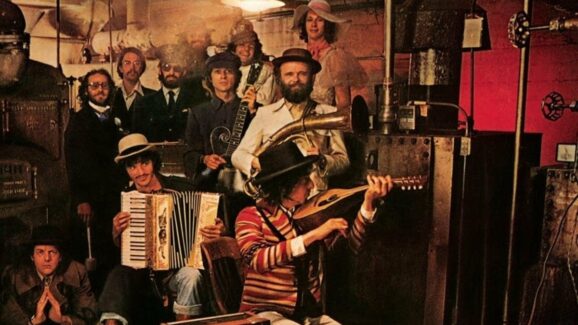Olmos is known for many roles, from his inspired characterization of El Pachuco in both the Broadway and film versions of Zoot Suit to the eccentric Origami-making cop in Blade Runner, and, of course, his portrayal of the real life teacher Jamie Escalante in Stand and Deliver, the silent yet deadly samurai-like Lt. Castillo in Miami Vice, and Admiral Adama in the new televised version of Battlestar Galactica. In American Me, Olmos also plays the lead character as a tired soul torn between fate and free will, themes that seem to come up in virtually every Hidden Flick, as it does in most situations in life.
Montoya Santana, the Mexican-American gang leader played by Olmos, learns that he may have the ability to win every conflict, but he may never win the battle that lies within. Ironically, he appears to have much more freedom inside the prison walls as his every whim and order are carried out to the letter. Once outside, an alleged free man in late 20th century L.A., Santana struggles with a desire to integrate his agenda within the rapidly changing drug culture of the modern era and the needs of his gang members.
Olmos does an admirable job of creating a claustrophobic and terror-filled cinematic vibe while mastering the numerous nuances of his tragic main voice in the complex story arc. I always enjoyed Olmos in Miami Vice because although he was a man of few words, he was always in command of everyone within his presence. In this film, one sees how that firm grasp of control can slowly slip away over time due to many changing factors.
The Mexican Mafia was not pleased with the way that the true story and its involvement in the celluloid contents were presented. Indeed, in many respects, Olmos may have taken questionable shortcuts and featured material that should have been more scrutinized during the screenplay development. Alas, it is not a perfect film, and those betrayed or disrespected because of the story Olmos told have an ironclad right to their opinion.
I lived for 18 months in Boyle Heights where some of the scenes in the film were shot, and respect for others in that Los Angeles community is as incredibly paramount as it is in any close knit environment in which few outsiders are permitted to live. (And I was most certainly an outsider in this world, although—for whatever reason—I was welcomed from day 1 into East L.A. culture.) Therefore, the word ‘respect’ is crucial when this community is portrayed, and the film has a controversial take on that idea. Some of the scenes in American Me are brutally frank. Some of the scenes make one very angry. Some are allegedly bullshit and disrespectful. Others are downright shocking and hard to witness, but they are there, and Olmos stood behind his fictionalized work.
In the end, beyond the arguments of what should and should not have been told in the film, American Me does offer a reason why a Chicano, or any other minority in this country, cannot always find peace in a society that supposedly offers freedom to all, opportunities for most, and a fighting chance at a slice of the American Dream.
- American Me: Amazon
/ NetFlix
- Previously on HF: Johnny and the Pirates
- More From Randy Ray: At The Helm w/ Jimmy Herring










One Response
I’m tired of the Republican bullshit…I think Montoya Santana should be confirmed by the Supreme Court as soon as possible.